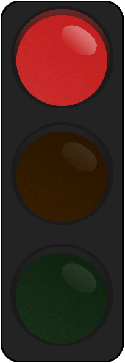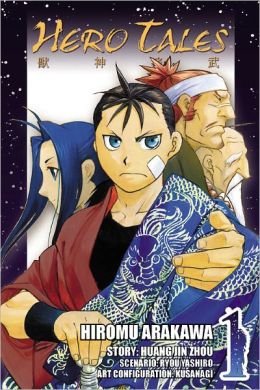PLOT:
Long ago in some vaguely China-esque land, a wicked emperor rules over the land with an iron fist. Mind you, that doesn't affect Taito all that much. He's simply a headstrong kid living with his sister Laila in the local temple, trying his hardest to pass his initiation into manhood. Upon doing so, he is given an ancient sword, which an Imperial operative tries to steal. While fighting off the agent, Taito discovers that he possesses a strange power, and that he may in fact be one of 7 prophesized warriors who will take down the wicked emperor. Now Taito and his sister must search the world to find his fellow warriors and save the country.
STORY:
This story is a familiar one, in that it's the same, Campbellian hero's journey that fantasy stories have been using since half past forever. That onto itself wouldn't necessarily be a fault if the character were well developed, but Hero Tales has a story as generic as its title.
You've seen this cast before in every other shonen story. You have the ultra-powerful, brash young man, the sweet yet bratty sibling, the snarky second banana who has a rocky and reluctant friendship with the lead, the blatantly evil villain and his equally evil and sneaky minions, and so on and so forth. Everyone's personality is as deep as a puddle and never breaks from a moment from their given role. As mentioned before, the plot is also very predictable, hitting all the usual 'hero's journey' stops along the way, and as such was extremely dull. When combined with the shallow, stereotypical characters, the end result is a boring, distant story that is impossible to become invested in. Such criticism alone is damning enough, but there's also a degree of disappointment in the writer himself...or should I say themselves?
You see, "Huang Jin Zhou" is merely an alias for a production crew, including two animation studios and the artist, one Hiromu Arakawa. You've probably heard of her previous series, a wee little shonen series known as Fullmetal Alchemist. In fact, she was working on that series simultaneously with this one, and it's not hard to see which of the two got the lion's share of her creativity and involvement. You can see some of her touches here and there - there's plenty of her signature style of humor, for example - but what you don't see is her own brand of subtle, well-planned storytelling, character building, or world building. It's a story and setting that has all the surface details of China, but none of the history behind it. As such, it doesn't feel like an Arakawa work, but instead like the corporate creation that it is, something that has been boiled down to its simplest and blandest components. Simple and bland make work fine for an anime production committee, but it does not make for good reading.
ART:
While Arakawa feels very absent from the story, her touches are all over the artwork. The only problem with that is that it's all touches ripped off from Fullmetal Alchemist.
You don't have to look too far to figure out that there are a lot of similarities between the character designs here and those in FMA. Taito and Laila are pretty much just dark-haired copies of Edward Elric and Winry Rockbell, Ryoukou is a long-haired Roy Mustang, the evil emperor is a carbon copy of Fuhrer Bradley, and so on and so forth. Now, it's one thing to have recognizable character designs, and yet another to reuse said designs (after all, some people *coughLeijiMatsomotocough* have done so successfully for decades). But in regards to Hero Tales, I suspect one of three theories on why the character designs are so similar to those of FMA:
1. FMA was/is a very popular and profitable series, therefore if the committee creates characters
that look like FMA's characters, then their series in turn will be popular and profitable.
2. Since Arakawa was working on this series and FMA simultaneous, she saved herself time and
effort by reusing character designs from her other work so she could just get it done.
3. Both 1 and 2.
As for the rest of the visuals, the backgrounds are a mixed bag. The vistas are nicely drawn, but backgrounds are nigh nonexistent in closer shots. The action's nicely drawn too, as Arakawa knows well how to draw action in a clean, crisp manner that maintain a lively sense of energy thanks to low panel angles and a touch of layering.
PRESENTATION:
There is one of Arakawa's signature goofy omakes, where she discusses her research trip to China. There are also translation notes and an honorifics guide in the back.
RATING:
 While the artwork lives up to Arakawa's usual high standard, the story is weak and there is far too much in the story and art that is too derivative of other fantasy works, of other shonen works, or of Arakawa's other manga.
While the artwork lives up to Arakawa's usual high standard, the story is weak and there is far too much in the story and art that is too derivative of other fantasy works, of other shonen works, or of Arakawa's other manga.This series was published by Yen Press. All 5 volumes were released, and all are currently in print.
You can purchase this volume and many more like it through RightStuf.com!

No comments:
Post a Comment